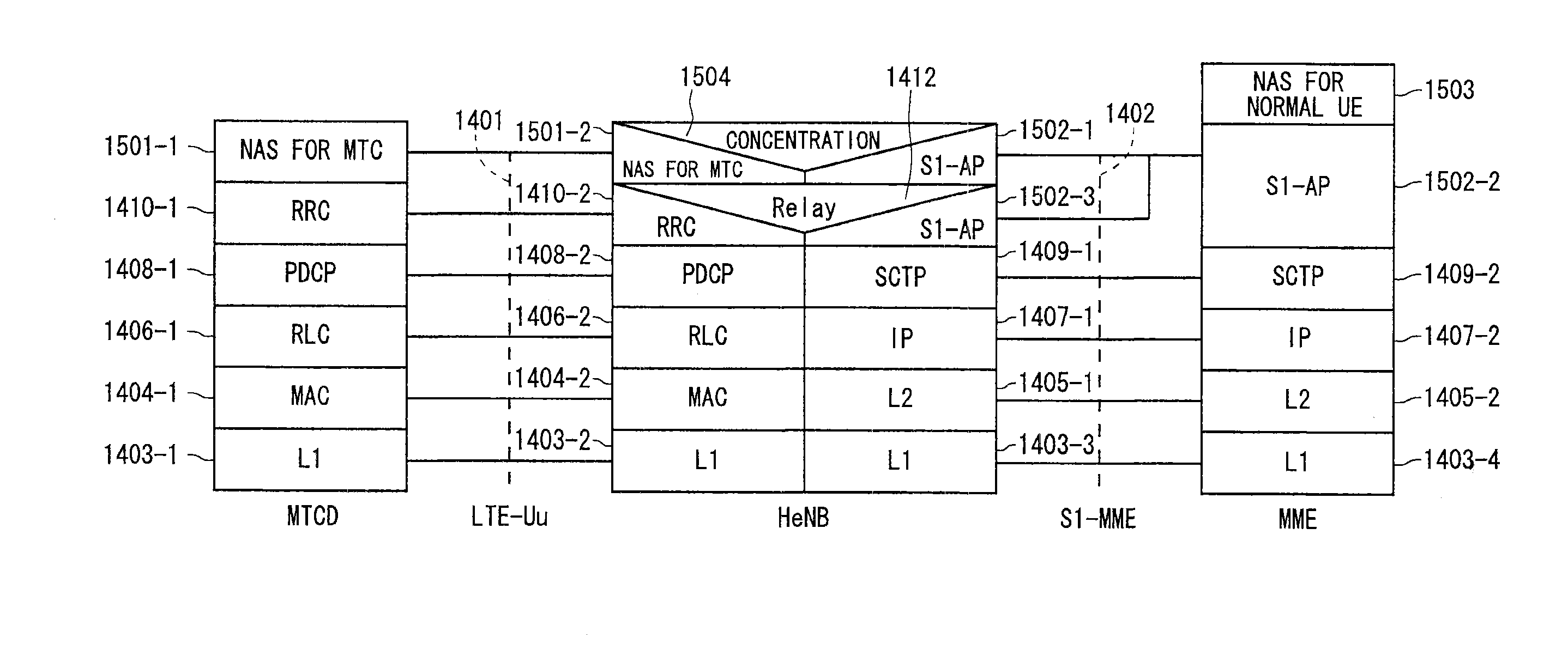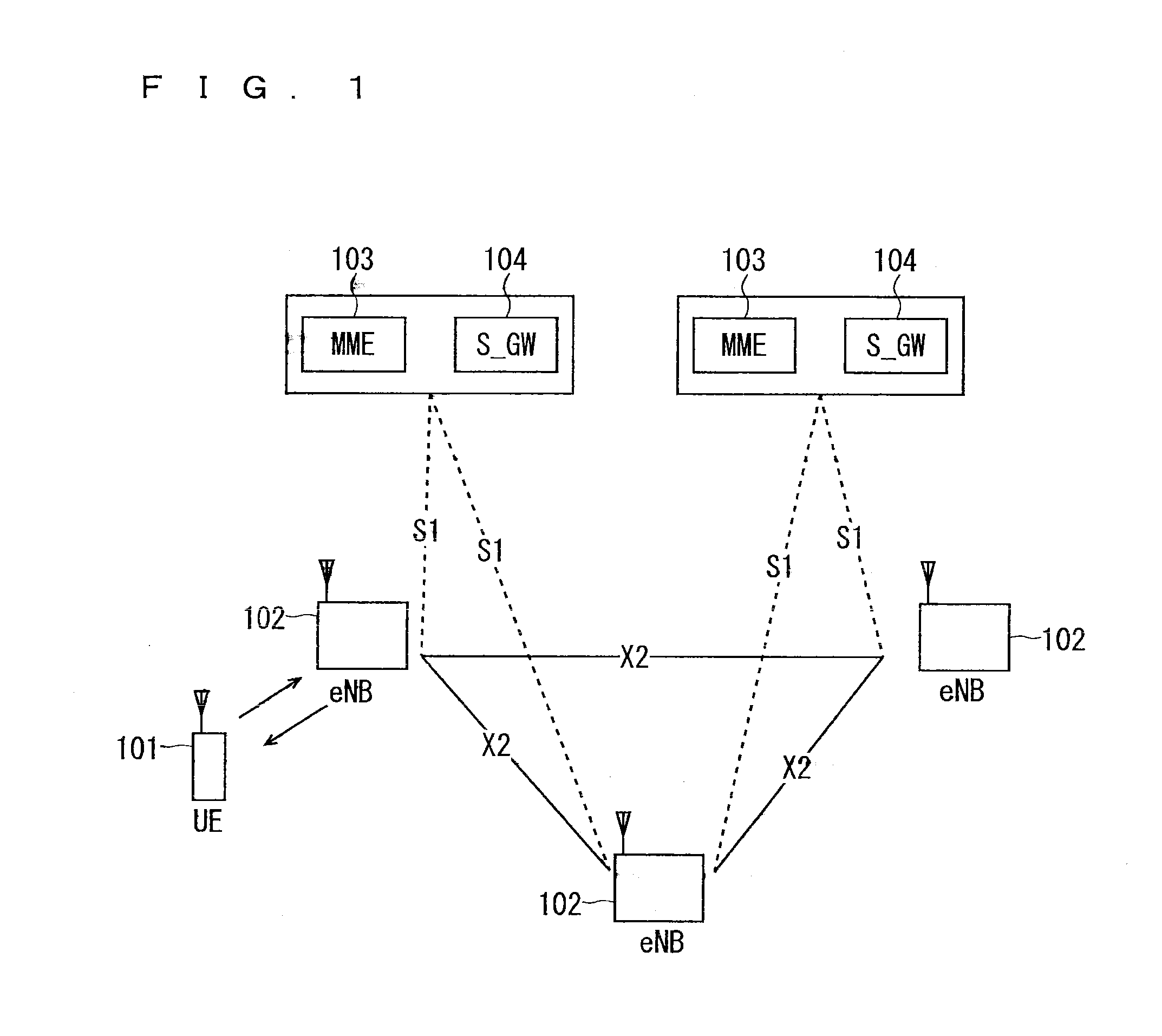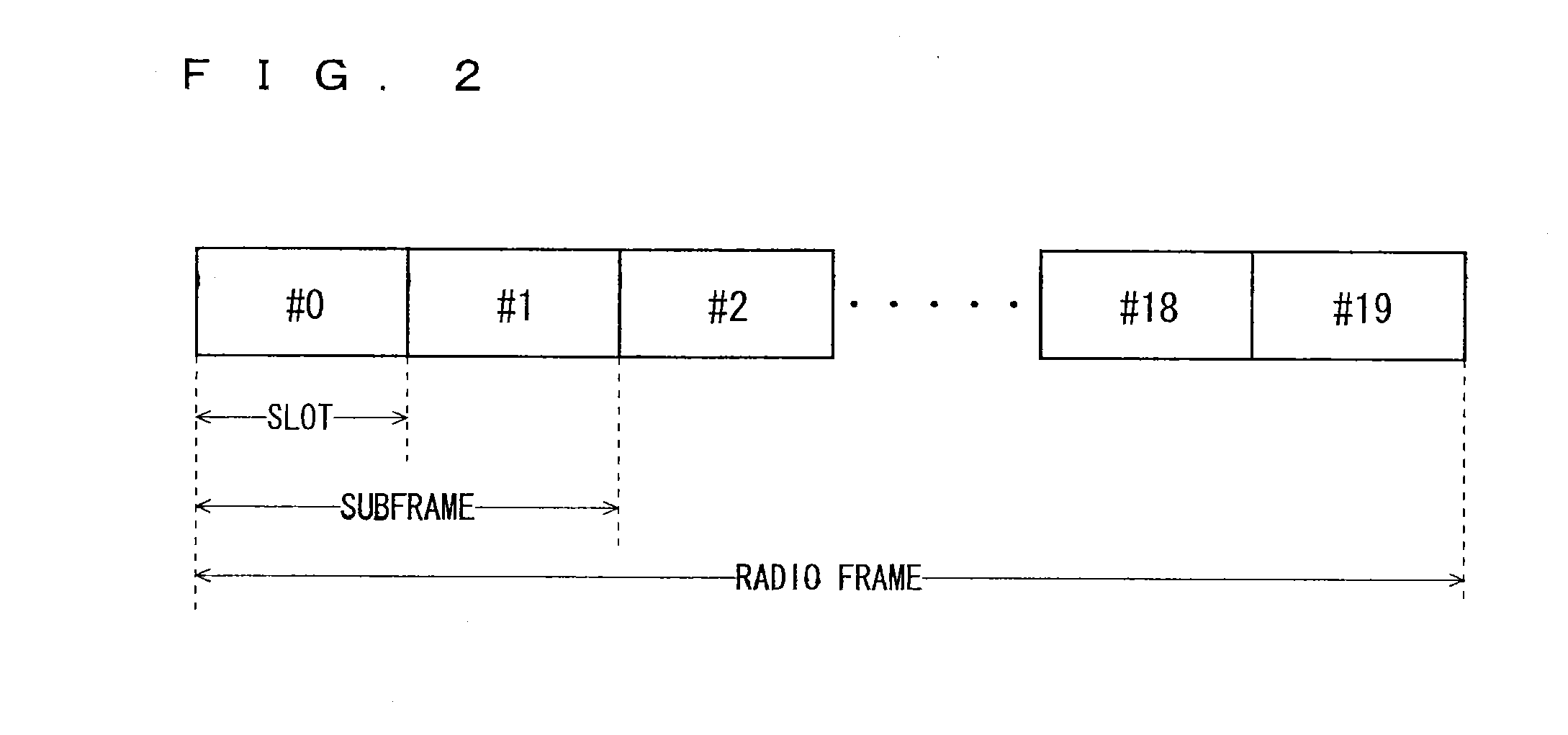Communication system
a communication system and communication system technology, applied in broadcast transmission systems, machine-to-machine/machine-type communication services, network topologies, etc., can solve problems such as reducing data rates, henb, user equipment (ue), and rach involving collision risks, so as to reduce data volume, prevent communication system from becoming complicated, and mitigate the congestion of the core network
- Summary
- Abstract
- Description
- Claims
- Application Information
AI Technical Summary
Benefits of technology
Problems solved by technology
Method used
Image
Examples
first embodiment
[0123]FIG. 7 is a block diagram showing an overall configuration of an LTE mobile communication system, which is currently under discussion of 3GPP. Currently, 3GPP is studying an overall system configuration including closed subscriber group (CSG) cells (Home-eNodeBs (Home-eNB; HeNB) of E-UTRAN, Home-NB (HNB) of UTRAN) and non-CSG cells (eNodeB (eNB) of E-UTRAN, NodeB (NB) of UTRAN, and BSS of GERAN) and, as to E-UTRAN, is proposing the configuration as shown in FIG. 7 (see Chapter 4.6.1 of Non-Patent Document 1).
[0124]FIG. 7 is described. A user terminal device (hereinafter, referred to as “user equipment” or “UE”) 71 is capable of performing radio communication with a base station device (hereinafter, referred to as “base station”) 72 and transmits / receives signals through radio communication. The user terminal device is equivalent to a communication terminal device. Hereinafter, the user terminal device is refereed to as “communication terminal” in some cases. The base stations ...
second embodiment
[0306]A second embodiment discloses a specific method of transmitting data from a HeNB to an MME, SGSN, or the like being a core network after the HeNB performs a concentration process using the first embodiment.
[0307]A solution in the second embodiment is described below. A HeNB serves as a trigger or origin, and transmits data from an MTCD being served thereby to an MME, SGSN, MTC server, or the like being a core network.
[0308]The following two (1) and (2) are disclosed as specific examples of the condition that a HeNB serves as a trigger of the data transmission to an MME, SGSN, MTC server, or the like being a core network from an MTCD being served thereby.
[0309](1) A HeNB transmits the data from an MTCD being served thereby to a core network irrespective of the reception of the uplink data from the MTCD being served thereby. This transmission may be performed over the resources for MTCD. Specific examples of the resources for MTCD include a time at which the communication for MT...
third modification
of Second Embodiment
[0365]A third modification of the second embodiment discloses another specific example of the second embodiment when the HeNB transmits the data from an MTCD being served thereby to an MME, SGSN, MTC server, or the like being a core network via the MME by means of the S1 interface. The existing S1 signaling or S1 message is used. The existing S1 signaling for control may be used. Alternatively, the existing S1 signaling associated with a user equipment may be used. The existing S1 signaling associated with a user equipment is also referred to as “UE associated Signalling” (see Non-Patent Document 14).
[0366]The following nine (1) to (9) are disclosed as specific examples of the parameters required for the existing S1 signaling when a HeNB transmits the data from an MTCD being served thereby to an MME, SGSN, MTC server, or the like being a core network via the MME by means of the S1 interface.
[0367](1) HeNB identity. This may be a physical cell identity (PCI), cell...
PUM
 Login to View More
Login to View More Abstract
Description
Claims
Application Information
 Login to View More
Login to View More - R&D
- Intellectual Property
- Life Sciences
- Materials
- Tech Scout
- Unparalleled Data Quality
- Higher Quality Content
- 60% Fewer Hallucinations
Browse by: Latest US Patents, China's latest patents, Technical Efficacy Thesaurus, Application Domain, Technology Topic, Popular Technical Reports.
© 2025 PatSnap. All rights reserved.Legal|Privacy policy|Modern Slavery Act Transparency Statement|Sitemap|About US| Contact US: help@patsnap.com



